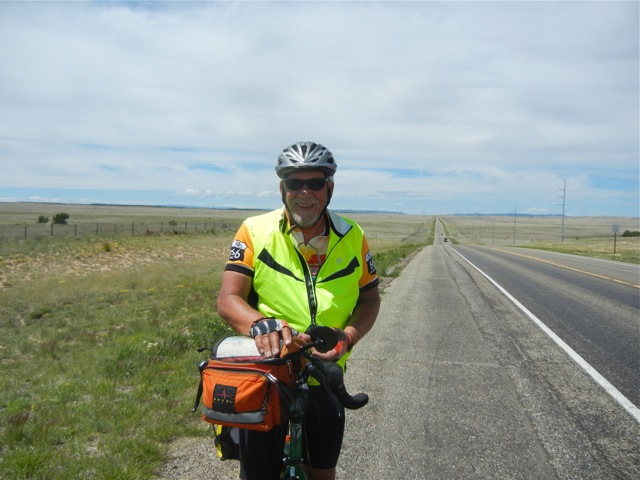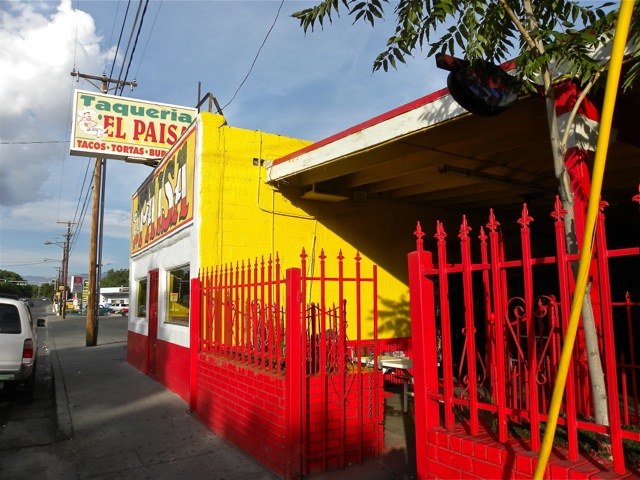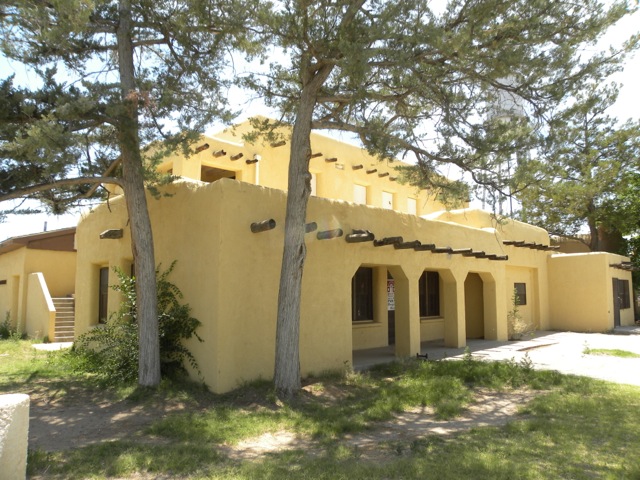ARTESIA PUBLIC LIBRARY—It was a two-part move for the mural. The first leg of the trip was to an airport hanger in Midland, Texas. There the mural would wait for about a year in a climate controlled setting until the Artesia library construction could be completed. However, there was a grass fire not too far from the airport as the Hurd fresco was being unloaded. It did no damage, but I imagine it reminded everyone that there is a certain amount of unpredictable risk involved in even “safe” storage situations.
The day the move started, traffic had to be closed off in downtown Houston. The big rig the fresco was sitting on was 151 feet long, about twice as long as the standard semi. Turning corners with that thing drew a lot of onlookers. Adding even more to the congestion was the size of the painting’s entourage. There were police cars, motorcycles, escort vehicles, cherry pickers and journalists in the caravan. It took all day just to get out of Houston.
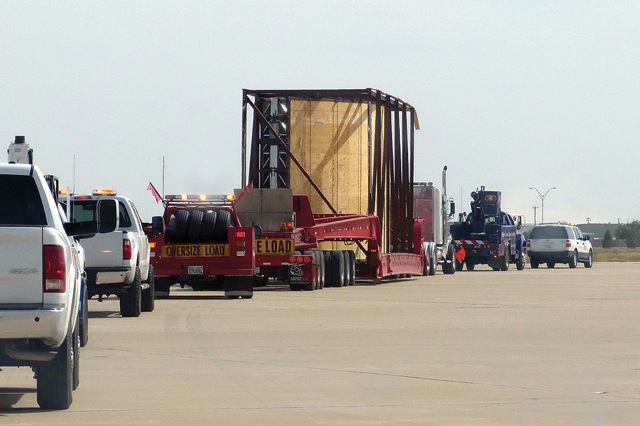
The State of Texas had come up with a route for the outsized cargo: no low underpasses and no freeways. It was Texas backroads all the way from Houston to Midland, about 800 miles.
Meanwhile, Artesia and library architect Jose Zelaya were trying to figure out how to construct the library around the concept of that 47 foot curved mural. How to get the mural into the building was a big concern. Zelaya solved it by having the roof constructed in such a way that a large part of it could be lifted off and thereby make it possible to lower the fresco by crane into place.
The building had to be virtually completed before the mural could be moved in. It would be impossible to protect it from the elements if the building were only half done…or one side of the structure had been left off. No, it had to be completed with all the heating, vents, and air conditioning finished to control the temperature and environment.
And then there was the concern that nobody wanted to leave the roof off the building overnight. This would have to be a continuous operation. Once it started it would have to be finished before they could stop working.
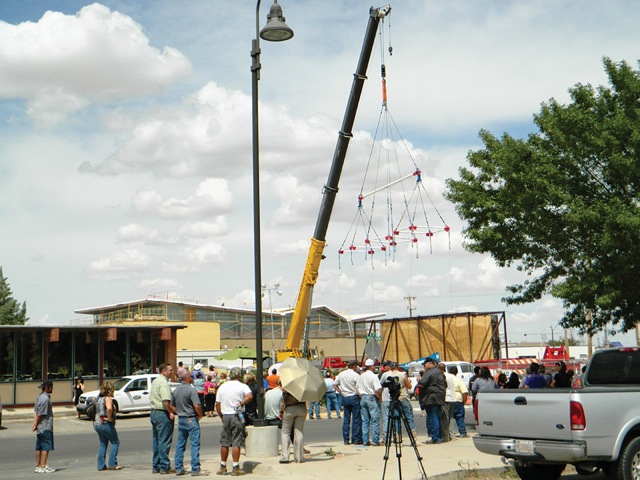
And so it was that at the end of August in 2013, That the caravan wound its way towards Artesia. It crossed the Pecos River. And finally at about 1:00 in the afternoon the convoy arrived in this town which had been anticipating the mural for so long. There was a welcoming committee. Elizabeth Stephens was part of the caravan and detailed the journey for FocusNM.com. Here is what she observed as they came into town.
“People dressed up for a party came in droves, packing the streets and sidewalks, setting up their umbrellas, camp chairs and tripods. People lined both sides of the highway from the railroad tracks all the way to Richardson and stood on the roof of the First American Bank, all waiting.
It was a hot day, but they stayed, occasionally walking to McDonalds to get a cold drink or a snack and take another picture with their cameras and cell phones from a different angle. Across the street from the library, Lois Oliver Real Estate invited people in to have a bite to eat, something to drink and the chance to cool off. Artesia had thrown a welcome party. People had started gathering the day before to watch the roof come off, applauding when it happened.”
That’s right. They had lifted the roof off the library with a crane and set it down in the parking lot! Unbelievable.
The crane now picked up the mural and set it in place. The mural was set down perfectly on its 9 columns.
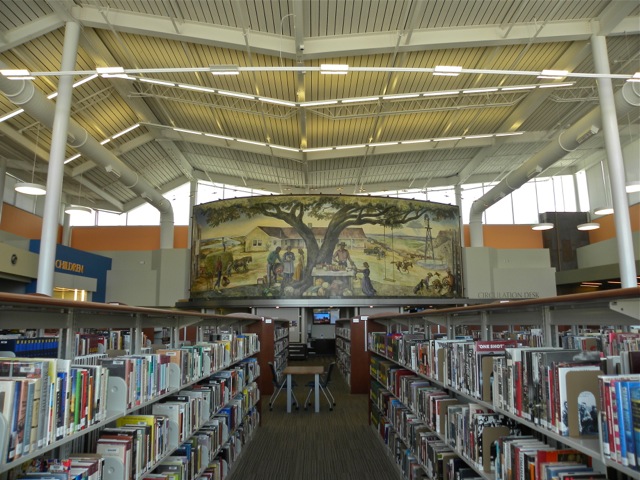
Then the crane put the roof back on. I heard that it took a full 24 hours for everything to be completed.
Albuquerque architect Jose Zelaya designed a beautiful building for Artesia, replete with symbolism and environmental echoes. The roofline mimics the skyline on the Sacramento Mountains. The carpeting harkens back to plowed fields and leads to Hurd’s pastoral fresco. And the children’s section is just gorgeous.
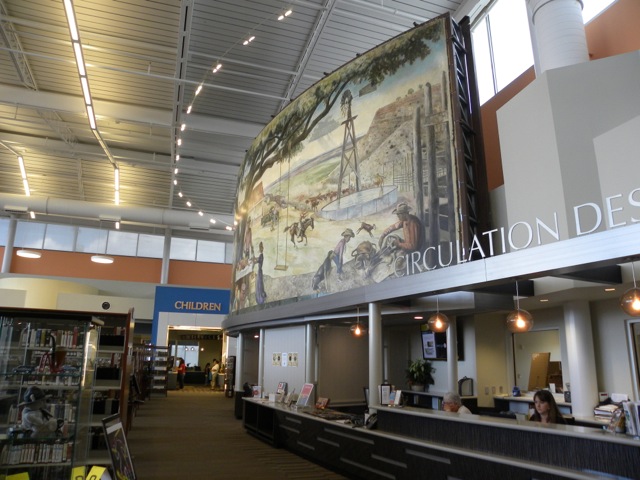
But the most wonderful features of his design have to be that removable roof, the placement of the mural and how it can be seen through the window day or night. It was felt that the Peter Hurd mural belonged to the people and they should be able to see it, even from the outside.
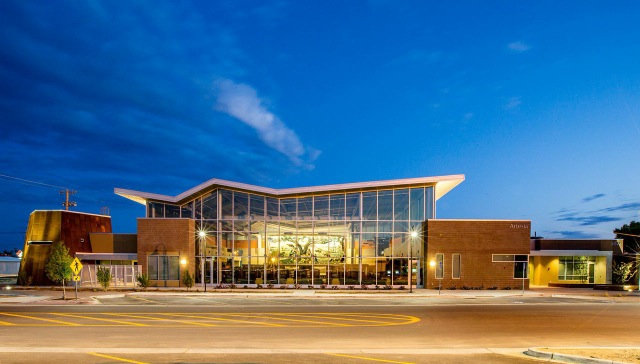
The picture showing the mural through the window is from architect Zelaya’s website. It is worth noting that the fire damage is still visible on the right side. Restoration work had not been completed at this point.
The restoration of the burned area is where Elizabeth Stephens’ detailed photos came in handy. The burned section was not completely repaired, however. Some of the char was left there on purpose so as to remind everyone of the amazing history and journey of this piece of art. The restoration was done by David Olin.
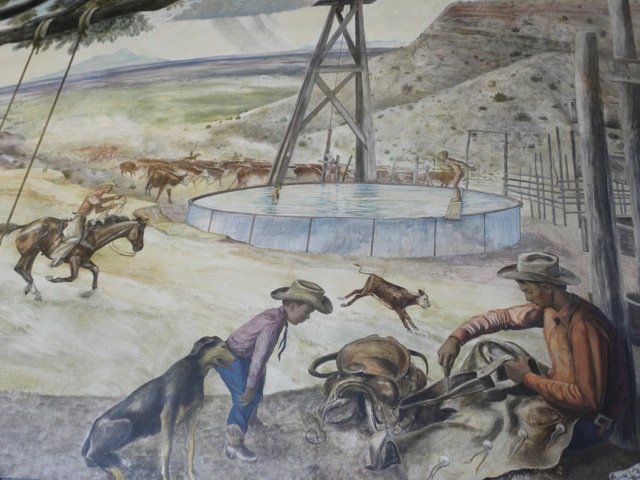
Also remaining from the journey is the steel framework and plywood backing. If you stand under the fresco, look up. You will see remnants of the “sandwich” that safely brought the piece across all those miles.
The mural is full of Peter Hurd’s family and friends. His son, Michael Hurd, is seen as the boy looking at the man working on his saddle. His daughter, Ann Carol, is standing in the orange dress leaning up against a tree. Peter Hurd also painted himself into this piece. He is leaning against the pickup truck looking over the shoulder at plans for an irrigation system.
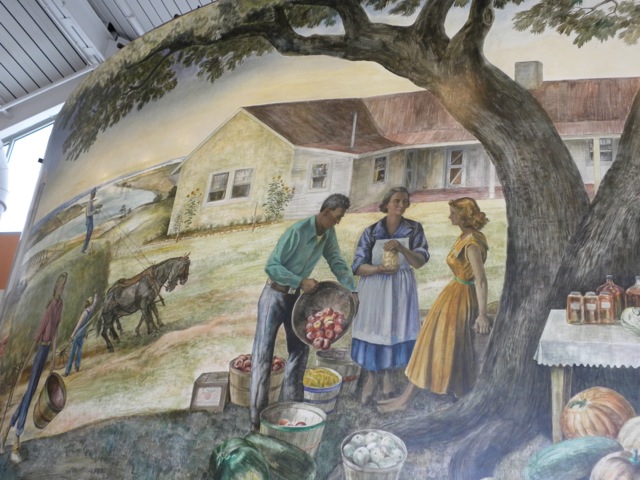
Peter Hurd’s commission for “The Future Belongs To Those Who Prepare For It” came to $22,000. Its worth today has been calculated at anywhere from $4,000,000 to $20,000,000.
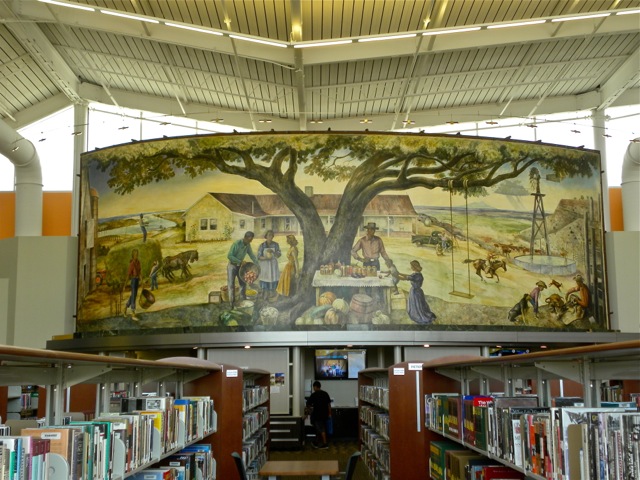
Nice job, Artesia! Nice vision. Excellent work by architect Jose Zelaya! The movers should be proud of their work. They have done something their grandchildren will talk about. And to the entire Artesian community of planners, volunteers and citizens, we all say, “Thanks!”
